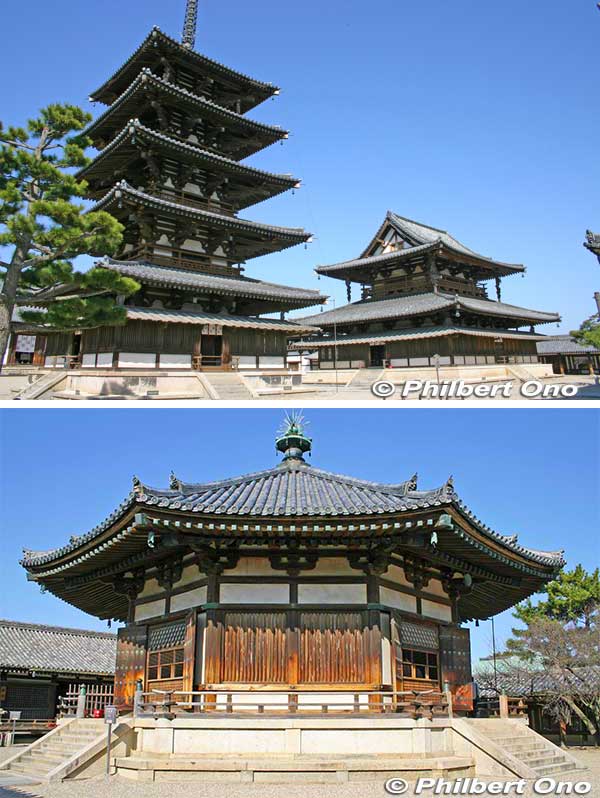
Nara Prefecture has the distinction of having Japan’s highest number of National Treasure buildings. A whopping 64 of them. This is almost 30% of Japan’s 227 National Treasure buildings/complexes. Kyoto Prefecture has the next highest number with 51 and Shiga Prefecture with 22. The majority are Buddhist temple and Shinto shrine structures and a few are castle structures. Being in the area where Buddhism was introduced to Japan, it’s no coincidence that these three adjacent prefectures have the top three highest numbers.
“National Treasure” (Kokuho 国宝) is Japan’s highest designation that a cultural object or even a living person (“Living National Treasure”) can receive. Ranked right below it is the much more common “Important Cultural Property” (Juyo Bunka-zai 重要文化材) which are also special, but National Treasures are extra special for their rarity, historical significance, and/or exceptional aesthetic beauty.
Even for sculptures, Nara Prefecture has the highest number of National Treasures. Its 74 National Treasure sculptures account for over half of Japan’s 136 National Treasure sculptures. Many of them are religious objects such as the famous giant Buddha statue in Todaiji Temple.
Among Nara’s many Buddhist temples, Horyuji stands out as one of the most famous. The upper photo shows Horyuji’s Five-Story Pagoda (五重塔) and Kondo Hall (金堂), both National Treasures. Kondo Hall is Horyuji’s main worship hall and the world’s oldest wooden building (1,300+ years).
Horyuji is Japan’s first World Heritage Site with a large temple complex of numerous buildings. It’s the headquarters of the Shotoku-shu Buddhist Sect founded by Prince Shotoku Taishi who is credited with spreading Buddhism in Japan in the 6th century.
Another building in the Horyuji complex is Yumedono Pavilion (夢殿) or Hall of Dreams, another National Treasure (lower photo). It’s a small, octagonal building with an octagonal roof topped with a shining jewel. It’s a very elegant-looking structure, and its claim to fame is that the famous Nippon Budokan martial arts hall in Tokyo was modeled after it. There’s a striking resemblance, especially the octagonal roof, complete with the shining jewel on the top. Interesting to see how the design of this modest building was transferred to the much larger Budokan where The Beatles once played.
Yumedono was built in 739 as a memorial hall for Prince Shotoku Taishi who once lived in this area as the founder of Horyuji Temple. Memorial services for Shotoku Taishi are held in the building. The public cannot enter the building, but it contains a few precious Kannon and Buddhist statues.
Horyuji sees much fewer tourists than Todaiji Temple (Great Buddha) and the deer park area near Nara’s main train stations. Good to visit if you want to avoid the crowds. ![]()
More photos of Horyuji: https://photoguide.jp/pix/thumbnails.php?album=520
![]() Closest station to Horyuji is JR Horyuji Station on the JR Yamatoji Line coming from JR Osaka or JR Nara Station. From Horyuji Station, 15-min. walk or 5-min. bus ride to Horyuji Temple.
Closest station to Horyuji is JR Horyuji Station on the JR Yamatoji Line coming from JR Osaka or JR Nara Station. From Horyuji Station, 15-min. walk or 5-min. bus ride to Horyuji Temple.
Official site: http://www.horyuji.or.jp/en/
Yumedono: http://www.horyuji.or.jp/en/garan/yumedono/